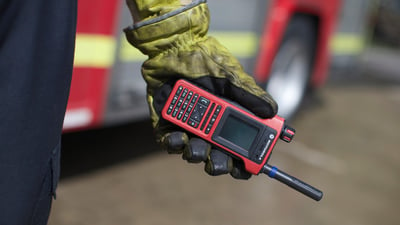 Two-way radios are essential across multiple industries. Superior to smart phones and cell phones, they provide communications capabilities that can stay up and running even when disasters hit, or when cell phone lines are down or overcrowded. Today’s radios are easy to use, intuitive, and designed for modern communications in public safety, education, hospitality, manufacturing, healthcare, and other industries.
Two-way radios are essential across multiple industries. Superior to smart phones and cell phones, they provide communications capabilities that can stay up and running even when disasters hit, or when cell phone lines are down or overcrowded. Today’s radios are easy to use, intuitive, and designed for modern communications in public safety, education, hospitality, manufacturing, healthcare, and other industries.
Still, there are two-way radio use guidelines that are essential in ensuring you’re getting the most from your communications.
Getting started
One of the first two-way radio use guidelines is simply to understand how the radio works. Many radios come pre-programmed for specific use and communications; however, some require programming by the end operator. Once the radio is set up, it’s a good idea to take the time to familiarize yourself with features. Know the radio’s specific channels or frequencies and who’s in your network of communications. Also, make sure you know your company’s protocols and procedures for two-way radio communications.
Basic etiquette
From there, two-way radio use guidelines involve some simple etiquette rules to make sure you’re using the equipment properly:
- Use English. Experts advise that English is the official international radio language.
- Be prepared before you make a call. Know who’re calling and why. Identify yourself before you begin speaking, and be clear about the purpose of the call.
- Recognize that two-way radios use push-to-talk technology (PTT). While this technology allows users to start communications with just the push of a button, it also means it’s not possible to speak when another person is talking.
- Do not interrupt. Based on the PTT functionality, it is best practice to not interrupt, and to not respond until you get the signal from the other caller to move ahead.
- Keep conversations concise and precise. Two-way radios are not devices for group meetings or long in-depth explanations. Avoid long and complicated sentences and questions. Also, do not use abbreviations unless they are well understood by everyone on the call. Even with noise cancellation technology, introducing unclear words and jargon, can make your intended message hard to hear.
- Make sure your radio stays in good working condition. Perform regular checks on the battery, volume, microphone, and antenna. Check to see that you and your colleagues are operating on the proper channel. These tips for two-way radio maintenance and trouble-shooting can help.
Remember the “Golden Rules”
According to one two-way radio protocol, users should also remember the “Golden Rules” of radio communication, which are:
- Clarity – Speak clearly and a little slower than normal. Do not shout.
- Simplicity – Keep your message simple so your listeners understand what you’re saying.
- Brevity – Stick to the point and don’t ramble.
- Security – Remember that radio frequencies are shared, which means what you say is not confidential, unless the proper security technology has been implemented.
Additional two-way radio use guidelines
Other pointers for making the most of your two-way radios communications is to keep the conversation brief. Make sure interactions are short and to the point. Repetition is also important—repeat what the caller said back to make sure you heard the communication correctly. Finally, radio protocol experts advise that in the interest of time and efficiency, it’s not essential to be polite. On two-way radios, you can skip saying “please” and “thank you.”
Two-way radios are being used more and more, as businesses discover the power of instant communications for efficiency, cost savings and improved customer service. With this increase will come more need to ensure all workers are following proper two-way radio use guidelines in order to maximize the technology and keep communications smooth.
To see how two-way radios can enhance your operations, contact us for a free demo.


